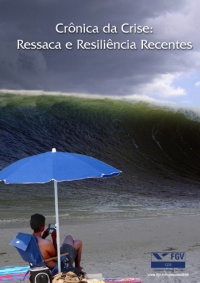
Chronicle of the Crisis: Recent Undertow and Resilience in Brazil
About the research:
Click here to see the content of the research
A previous study from the Center for Social Policies analyzed who lost as a result of the international crisis impacts since September 2008, based on the people’s movements into and out of economic classes. Even after September 2008, Class C had kept its previous rate of growth until December. Class AB was the only one to show some contraction.
Nevertheless, as the year began, the impacts of the external crisis were widespread for the population of the main metropolitan regions and in January alone had moved around 560 thousand people from classes AB and C back to classes D and E. January subverted the trends of the last five years: the classes that had gained more participation began to lose more, and vice-versa. The barriers against the impacts of the crisis fell one by one in January, classes E and D began to grow in the post-crisis period as a whole, class C began experiencing a decrease, which was accelerated in class AB.
Overall, we have observed an inversion of the movements of people into and out of the economic classes as compared with the previous period, according to which those who gained more participation (classes AB and C in this order), now lose more. The post-crisis period image inverts the image of the pre-crisis period, as in a mirror. More than a point of gradual change, December corresponded to a vertex as in a V, bouncing off previous gains. The turn of the year brought negative novelties to the composition of Brazilian economic classes, with a special emphasis on their extremes – in other words, an increase in the poorest classes and a reduction in the highest-income classes.
The research methodology is innovative as it follows the path of the same people through the crisis period, analyzing their individual risks. For instance, it shows that for each 100 people who were in class C, the likelihood to remain in the same class or moving upward has decreased, and the likelihood to descend from that class has increased since the turn of the year. Besides, the research analyzes inequality of per capita income from work, revealing that the strong deconcentration of income of the last seven years has suffered a drawback during the crisis. A similar reversion also happens in the average income, which is reduced and, combined with a worse distribution, helps to explain the changes in the composition and the mobility of the economic classes. The research provides a point-by-point analysis the resilience of the Brazilian society towards the crisis.
According to the analogy of the tiny wave and the tsunami, January saw an undertow whereby the income average, inequality and mobility gains from the previous five years began to diminish.




